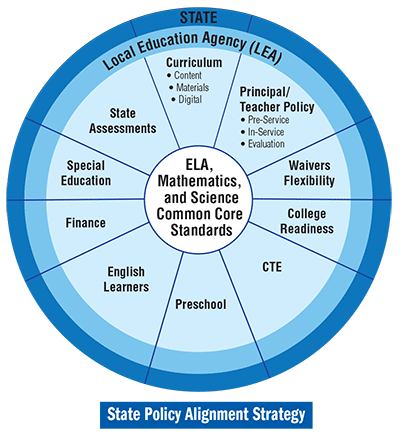Editor’s Note: California Gov. Jerry Brown has proposed a new formula for funding the state’s public schools. Known as the Local Control Funding Formula, the plan seeks to address glaring inequities plaguing the current K-12 school finance system. In 2008, State Board of Education President Michael Kirst co-authored a policy brief that became the foundation for Brown’s proposed formula. NAM editor Peter Schurmann spoke with Kirst about how the state ended up with the system now in place and whether the governor’s formula can help turn things around.
New America Media: If education experts agree on anything, it’s that California’s current school funding system is a wreck. How did we get to this point?
Michael Kirst: California was the nationwide leader in school-finance equity up to 1971. That year, the state’s Supreme Court ruled in Serrano v. Priest that the system was unconstitutional because it was based on property tax wealth in California’s more than 1,000 districts. The court was convinced there was a correlation between the wealth of property in the district and the spending level.
This was a major issue in the 1974 campaign for governor, and I was brought in as the advisor for Gov. Brown to solve it. The courts said, “Just make sure the districts are spending about the same amount of money, even if their property tax values vary enormously.”
So we leveled the high-spending districts down and leveled the low-spending districts up. Finally, something like 95 percent of pupils were enrolled in districts that were spending within $300 of each other. The courts said, “Fine, you’ve done your job.” And they ended the suit.
Well, that left us with no adjustments for special needs. And then the categorical programs [legally required, such as special education] began to really proliferate.
NAM: In your view, will Gov. Brown’s proposed Local Control Funding Formula be effective in returning the state to a more equitable system?
Kirst: The plan really adjusts for pupil needs in a way that the current formula does not. As the state added categorical programs, some of them were directed toward needy pupils, but many were not.
As we discussed, the Serrano decision in 1971 was very important in pushing school finance equity. But it merely [said] school districts should spend about the same amount. It ignored [adjusting] the finance system to differing needs of pupils, rather than just worrying about the differences in spending between districts like Beverly Hills and low-income Baldwin Park, for example.
The other thing that is important is the [formula’s] concentration factor. This is really important for California, where so many students live in districts with high concentrations of not only low-income students, but also English learners. [In the new formula] we felt there are special circumstances like these that deserve even higher weightings.
NAM: Previous attempts have been made to pass similar formulas. What’s changed in Sacramento that might give this one a fighting chance?
Kirst: I would say it’s gubernatorial leadership. The governor’s office in California is inherently very powerful, [and Gov. Brown] has really seized this issue in a passionate and committed way, rather than in just an intellectual way.
These things are not easily generated by the legislature because they’re so divided ... Interest groups couldn’t really coalesce over this either because they have members with all kinds of pupil backgrounds. That’s been the pattern in California for the past 30 years. If you don’t have the governor, you really can’t do it.
NAM: Then in that sense, are the shortcomings in California’s education system the result of failed leadership?
Kirst: Yeah, I think so. If you go back to the last time California had money, in 2006, the governor and the legislature created 22 new categorical programs. All they did was reinforce the past. If left to its own devices, the current system will revert back to form, which is more categorical programs and then that disease “hardening of the categories” sets in as lobbyists are hired for each category.
NAM: Are categorical programs, such as those designed for special ed. students, at the root of the problem?
Kirst: I am not against all categoricals. We’ve left special education untouched [in the proposed formula]. The main problem is that California just got hooked on this much more than any other state. So problems of whatever size – big or small – were solved through a categorical grant. Then, as various districts began to be favored by the pattern of categorical grants, the districts that didn’t get much money said, “We need a categorical grant for us.” That included some of the wealthier districts.
Since there was no underlying rationale for what was being done in school finance, it became an ad-hoc political free-for-all. The legislators liked it because they could pass a categorical program and it became their footnote in history.
NAM: California is near the bottom in per-pupil spending. How will Brown’s formula affect the state’s ranking in this regard?
Kirst: The governor has concluded that over the past decade, education – both K-12 and higher education – has been cut disproportionately. So over time, he is committed to moving the [per-pupil] base funding (which averages roughly $8,500 – 30 percent below the national average) up for all districts, even those with lower numbers of needy students. This is a major shift in the priority for education within the overall state budget. That said, [the formula] still can’t make up for the lack of local revenue sources stemming from Proposition 13.
....
